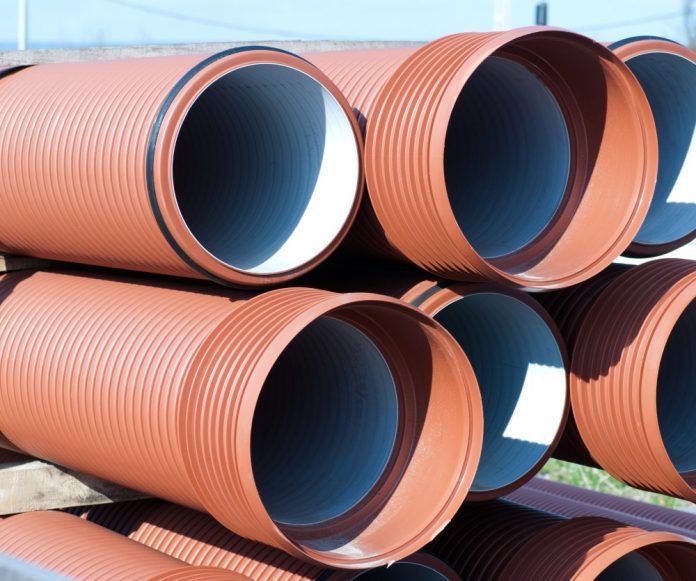It might have struck you as a child how oxygen tanks and extinguishers are made. The intricacy of curving the cylinder whole from inside out is a thing of beauty courtesy of filament winding. Filament winding refers to the fabrication technique which is implored in manufacturing open and closed end structures such as cylinders, tanks or vessels.
Filament Winding Process
When you get down to basics the process that which seemed too complex is toned down many notches. It pretty simple actually; you need a rotating mandrel to wind filaments on under pressure. You have to keep the mandrel rotating around a spindle.

Fiber winding is a creation system that you can utilize for assembling open or shut end structures. This procedure includes twisting fibers under pressure over a pivoting mandrel. The mandrel turns around the axle; axis 1 or X: Spindle. This is where the tussle gets complicated because you need a conveyance eye on a carriage; axis 2 or Y: Horizontal.
Filament winding processes are two. They can either be;
1. Discontinuous winding process.
This process is used to manufacture high pressure parts, pressure vessels, pipes and complex components. Multi-axes machines have major reference here and they are used for customizing the angle for laying fiberglass brand.
Continuous winding process.
This process manufactures small to very large in diameter pipes which are low pressure. The process which continuous winding process implores for this continuous manufacture on a mandrel that’s formed out of an endless band is known as the Drostholm process.
Pipes that are produces in this process are only used for media; water, sewerage and waste water and also for transmission.
These are the underlying two major processes and all together they follow the following steps:
- Using a direct single end roving; a continuous strand of fiber or relatively a tape.
- It should result to a shell of materials with high strength to weight ratio. This is due to the 70-80% of glass in the composite matrix.
- Resulting patterns might be polar, circumferential, helical or longitudinal.
- Thermal curing of work pieces.
The transverse hassle is the uphill task here. You have to ensure that carriage navigates on a level plane in accordance with the pivot of the turning mandrel. While this goes on, it should as well be setting down filaments/fibers in the desirable pattern. The most common filament for this purpose is glass or carbon and it only stops it covers the mandrel to a desired level of thickness.
The resin is cured only after the mandrel is completely submerged to desired thickness. The working mandrel can be placed in either under radiant heaters or in an oven for curing the resin but it depends on two factors; the resin system and its cure characteristics.
Filament Winding Material
Just like in sand casting techniques there needs to be chief source of material for the process and by products. Filament winding needs filaments to be able to assemble open or closed structures and the most common filaments are carbon and glass. Either of the two are impregnated in a shower with resin as they are wound onto the mandrel.

When the resin cures you can then go ahead and remove the mandrel. Removing the mandrel will leave behind the final product that ought to be hollow. This does not apply in all cases as in some the mandrel stays as part of the final product. Take for instance gas bottles where the mandrel still remains as a permanent part of the finished product.
Cases like gas bottles where the mandrel is left as part of the finished product is a huge relief and an economical salvage. This is because you won’t have to worry about loses or accident from gas leakages. The mandrel forms a liner which acts as a barrier which protects the composite from the stored fluid.
Filament Winding Applications
Anything categorical to automation and cylinders as well implores filament winding heavily. The following applications are well suited for filament winding:
1. Pipes and pressure vessels.
There are small pipes and pressure vessels which don’t need any human intervention during wounding and curing.

Variables for Filament Winding
Every process of compression and manufacture has controlled variables which are the pre-requisite for attaining desired shape. For filament winding, the controlled factors for winding are:
- Fiber type
- Resin content
- Wind point
- Tow or data transmission
- Thickness of the fiber package/bundle.
The fiber angle affects the properties of the final product. A high point “loop” will therefore give you circumferential quality while a lower angle pattern/edge design; whether polar or helical will give more noteworthy longitudinal/hub tensile rigidity.
Filament Winding By-products
Filament winding has major uses in present day and some of the items right now being delivered utilizing this strategy include:
- Funnels
- Golf clubs
- Reverse Osmosis Membrane Housings
- Paddles
Filament winding machines
The simplest winding machines have two ‘tomahawks’ of movement; the mandrel rotation and the carriage travel which is normally horizontal. These two axes machines/’tomahawks’ are most appropriate for the fabrication of pipes only.
For weight vessels, for example, LPG or CNG compartments, you are most likely to find a four axis hub winding machine. A four ‘tomahawks’ machine moreover has an outspread pivot; cross-feed and lies opposite to carriage travel and a turning fiber payout make a beeline for the cross-feed hub.

You can use the payout head turn to stop the fiber band bending and along these lines fluctuating in width amid winding. Machines with more than four tomahawks; six-pivot winding machines can be utilized for cutting edge applications. This is because six-pivot winding machines have more often than 3 direct/linear and 3 revolution/revolution tomahawks.
Such machines with in excess of 2 axes of movement have PC/CNC control. However most of these new day 2 axes machines have numerical control. A PC controlled filament winding machine will require the utilization of programming software so as to create the winding examples and machine ways.
Programming software as such is normally given by filament winding machine manufacturers. If the software lacks, you can alternatively use independent products. For instance, Cadfil or Cadwind; programming methods that reviews programming techniques for CNC machines can be discovered here. You can grab the Cadfil or Cadwind which is found all through the web.
Conclusion
The intricate design of filament winding is incredible. It may seem on the outside like something done with minimal effort by joining metal rolls together but it involves more than that. Who would have known that golf wouldn’t be a cool fad without throwing in a dash of filament winding for the golf clubs?







